Best Practices Articles

The Evolution and Importance of Partner Ecosystems in Today’s Business Landscape
Partner ecosystems have become more critical than ever in today's rapidly changing business environment. The concept of a partner ecosystem is not new, but its significance has grown exponentially due to globalization, technological advancements, and shifting market dynamics. This article delves into the intricate world of partner ecosystems.
A partner ecosystem refers to a network of companies that collaborate and integrate their products and services to provide comprehensive solutions to customers. These ecosystems enable businesses to leverage their partners' strengths, expand their market reach, and enhance customer satisfaction. The dynamic nature of these ecosystems makes them vital for the growth and sustainability of modern enterprises.
The Shift from Globalization to Regionalization
Over the past decade, the trend of globalization has seen a shift towards regionalization. Factors such as GDPR, China's data security laws, and the US-China trade war have contributed to this shift. Companies are now focusing more on localized innovation and strategic regional alliances.
Implications for Partner Ecosystems:
- Localized Strategies: Developing region-specific strategies to address local market needs and regulatory requirements.
- Supply Chain Diversification: Ensuring diverse and resilient supply chains to mitigate risks associated with geopolitical uncertainties.
- Regional Partnerships: Forming strategic alliances with local partners to enhance market penetration and customer engagement.
Navigating the Complexities of Different Industries
Different industries face unique challenges in managing partner ecosystems. For example, the hardware industry deals with complex supply chains, while the software industry focuses more on data security and regulatory compliance.
Key Considerations:
- Hardware vs. Software: Hardware companies must diversify sourcing and supply chains, whereas software companies need robust data security measures and localized data centers.
- Service Models: The rise of subscription-based models in hardware and software industries necessitates new approaches to partner management and customer engagement.
Talent Management in a Partner Ecosystem
Talent management is one of the most pressing challenges in today’s business landscape. The rapid pace of technological advancements and the global talent shortage require companies to adopt innovative talent strategies.
Strategies for Talent Development:
- Skill Diversification: Rotating employees through different roles to build a broad skill set and enhance leadership capabilities.
- Remote Work: Leveraging remote work technologies to tap into global talent pools without needing physical relocation.
- Training and Development: Investing in continuous training and development programs to keep pace with technological changes and market demands.
The Subscription Economy and Partner Ecosystems
The subscription economy has transformed how companies engage with customers and manage their partner ecosystems. This model provides recurring revenue streams and fosters long-term customer relationships.
Key Elements:
- Customer-Centric Approach: Understanding the customer journey and providing value through seamless integration of partner products and services.
- Digital Transformation: Embracing digital technologies to enhance customer experiences and streamline operations.
- Marketplaces: Utilizing digital marketplaces to reach a broader audience and simplify buying.
The Future of Partner Ecosystems
The future of partner ecosystems is shaped by technological advancements, changing market dynamics, and evolving customer expectations. Companies must stay agile and continuously adapt their strategies to thrive in this environment.
Emerging Trends:
- AI and Automation: Leveraging artificial intelligence and automation to optimize partner interactions and enhance decision-making processes. Read more.
- Data-Driven Insights: Utilizing data analytics to gain insights into customer behavior and optimize partner strategies.
- Sustainable Practices: Integrating sustainability into partner ecosystems to meet regulatory requirements and address growing consumer demand for environmentally responsible products.
Creating a Successful Partner Ecosystem
Creating a thriving partner ecosystem requires careful planning, strategic vision, and continuous adaptation. Below are the essential steps and strategies to build and maintain a flourishing partner ecosystem.
Establishing Clear Objectives
The first step in creating a flourishing partner ecosystem is establishing clear objectives. These objectives should align with the overall business goals and provide a roadmap for the ecosystem's development.
- Define Goals: Outline what the company aims to achieve through its partner ecosystem, such as market expansion, increased revenue, or enhanced customer satisfaction.
- Set Metrics: Establish Key Performance Indicators (KPIs) to measure the ecosystem's success. These metrics include revenue growth, customer acquisition rates, and partner engagement levels.
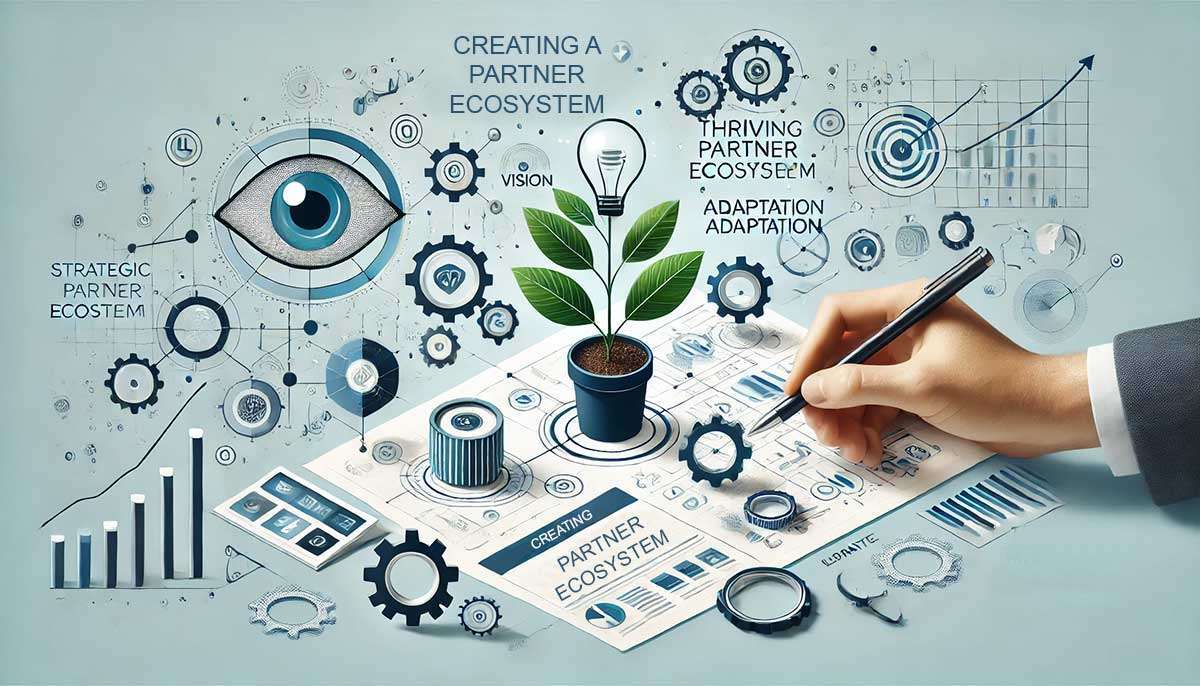
Identifying and Onboarding the Right Partners
Choosing the right partners is crucial for the success of any partner ecosystem. Companies should seek partners whose strengths complement their own and who share similar business values and goals.
- Partner Selection: Evaluate potential partners based on their market presence, technical capabilities, and cultural fit.
- Onboarding Process: Develop a structured onboarding process to integrate new partners smoothly into the ecosystem. This process should include training, support, and clear communication of expectations.
Building Strong Relationships
Strong relationships are the foundation of a thriving partner ecosystem. Companies should focus on building trust and fostering collaboration among partners.
- Regular Communication: Regularly communicate with partners to keep them informed and engaged. This can include newsletters, webinars, and regular meetings.
- Collaborative Planning: Involve partners in strategic planning and decision-making processes to ensure their interests and insights are considered.
Leveraging Technology
Technology is vital in managing and optimizing partner ecosystems. Companies should leverage digital tools and platforms to streamline operations and enhance partner interactions.
- Partner Portals: Create a dedicated partner portal to provide partners with easy access to resources, training materials, and support.
- CRM Systems: Use Customer Relationship Management (CRM) systems to track partner activities, manage relationships, and analyze performance data.
Providing Support and Resources
Supporting partners with the right resources and tools is essential for their success. Companies should invest in training, marketing support, and technical assistance to empower their partners.
- Training Programs: Develop comprehensive training programs to educate partners about products, services, and best practices.
- Marketing Support: Provide partners with marketing materials, co-branding opportunities, and assistance with lead generation.
Case Studies: Successful Partner Ecosystems
Examining thriving partner ecosystems can provide valuable insights and inspiration for other companies. Below are companies that have excelled in building and managing their partner ecosystems.
Adobe Partner Connection Program
Adobe's Partner Connection Program is a prime example of a thriving partner ecosystem. Their global program significantly contributes to Adobe's market presence and customer satisfaction.
- Global Reach: The program was rolled out globally, ensuring consistency and alignment across different regions.
- Partner Enablement: Adobe provided extensive training and resources to partners, enabling them to sell and support Adobe's products effectively.
- Continuous Improvement: The program was refined to adapt to market changes and evolving partner needs.
Cisco Partner Ecosystem
Cisco's partner ecosystem is renowned for its extensive network of partners and collaborative approach. The company's commitment to innovation and partner success has made it a leader in the technology industry.
- Innovation: Cisco invests heavily in innovation, providing partners with cutting-edge technologies and solutions.
- Collaboration: The company fosters a collaborative environment, encouraging partners to share insights and work together on joint initiatives.
- Support: Cisco offers comprehensive support, including training, marketing assistance, and technical resources, to ensure partner success.
Challenges in Managing Partner Ecosystems
Managing a partner ecosystem is not without its challenges. Companies must navigate various obstacles to ensure their ecosystems remain effective and aligned with their business goals.
Common Challenges:
- Communication Barriers: Maintaining clear and consistent communication with all partners can be challenging, especially in global ecosystems.
- Resource Allocation: Ensuring partners have the necessary resources and support requires careful planning and investment.
- Conflict Resolution: Conflicts may arise among or between partners and the company. Effective conflict resolution strategies are essential to maintain harmony within the ecosystem.
Strategies for Overcoming Challenges
To overcome these challenges, companies should adopt proactive strategies and best practices. Below are some methods to address common challenges in managing partner ecosystems.
Enhancing Communication
- Regular Updates: Provide regular information to partners through newsletters, webinars, and meetings.
- Feedback Mechanisms: Establish feedback mechanisms to gather partner insights and address their concerns promptly.
Efficient Resource Management
- Resource Planning: Develop a resource allocation plan to ensure partners can access the necessary tools and support.
- Invest in Technology: Utilize technology to streamline resource management and provide partners with easy access to information and support.
Effective Conflict Resolution
- Clear Policies: Establish clear policies and guidelines for conflict resolution.
- Mediation: Use mediation to resolve conflicts amicably and maintain positive relationships within the ecosystem.
Measuring the Success of a Partner Ecosystem
Measuring the success of a partner ecosystem is crucial to ensure it delivers the desired outcomes. Companies should establish clear metrics and regularly assess the performance of their ecosystems.
Key Metrics:
- Revenue Growth: Measure the contribution of the partner ecosystem to overall revenue growth.
- Customer Satisfaction: Assess customer satisfaction levels to determine the effectiveness of the ecosystem in meeting customer needs.
- Partner Engagement: Track partner engagement levels, including participation in training programs, marketing initiatives, and collaborative projects.
The Role of Technology in Partner Ecosystems
Technology is a driving force behind the success of modern partner ecosystems. Digital tools and platforms enable companies to manage their ecosystems more effectively and enhance partner interactions. Read more.
Essential Technologies:
- Partner Relationship Management (PRM) Systems: PRM systems help manage partner relationships, track activities, and analyze performance data.
- Customer Relationship Management (CRM) Systems: CRM systems provide valuable insights into customer behavior and help optimize partner strategies.
- Analytics Tools: Analytics tools enable companies to gather and analyze data from their partner ecosystems, providing actionable insights for continuous improvement.
The Future of Partner Ecosystems: Trends and Predictions
Several emerging trends and technological advancements shape the future of partner ecosystems. Companies must stay ahead of these trends to ensure their ecosystems remain competitive and effective.
Key Trends:
- Artificial Intelligence: AI transforms partner ecosystems by automating processes, enhancing decision-making, and providing deeper insights into partner performance.
- Blockchain Technology: Blockchain offers new possibilities for secure and transparent transactions within partner ecosystems.
- Sustainability: As sustainability becomes a priority for consumers and regulators, companies must integrate sustainable practices into their partner ecosystems.
The Importance of Adaptability in Partner Ecosystems
Adaptability is crucial for the success of partner ecosystems. Companies must be able to quickly respond to changes in the market, technological advancements, and evolving customer needs. An adaptable partner ecosystem can help companies stay competitive and achieve long-term success.
Strategies for Enhancing Adaptability:
- Continuous Learning: Encourage continuous learning and development among partners to keep up with industry trends and best practices.
- Flexible Processes: Implement flexible processes that can be easily adjusted to accommodate market or business environment changes.
- Innovation: Foster a culture of innovation within the partner ecosystem to encourage new ideas and solutions.
Building a Culture of Collaboration
Collaboration is a critical element of thriving partner ecosystems. Companies must create a culture of collaboration that encourages partners to work together towards common goals.
Strategies for Fostering Collaboration:
- Shared Goals: Establish shared goals and objectives aligning with the business strategy.
- Joint Initiatives: Encourage partners to participate in joint initiatives and projects to strengthen relationships and drive mutual success.
- Recognition and Rewards: Recognize and reward partners for their contributions and achievements to motivate continued collaboration.
Leveraging Data and Analytics
Data and analytics play a critical role in the success of partner ecosystems. Companies must leverage data to gain insights into partner performance, customer behavior, and market trends.
Strategies for Leveraging Data:
- Data Collection: Collect data from various sources, including partner activities, customer interactions, and market research.
- Data Analysis: Use advanced analytics tools to analyze data and identify patterns, trends, and opportunities.
- Data-Driven Decisions: Make data-driven decisions to optimize partner strategies, improve customer experiences, and drive business growth.
Ensuring Compliance and Risk Management
Compliance and risk management are essential to managing partner ecosystems. Companies must ensure their ecosystems comply with regulatory requirements and manage risks effectively.
Strategies for Compliance and Risk Management:
- Regulatory Compliance: Stay up-to-date with regulatory requirements and ensure all partners adhere to these standards.
- Risk Assessment: Conduct regular risk assessments to identify potential risks and develop mitigation strategies.
- Monitoring and Auditing: Implement monitoring and auditing processes to ensure compliance and identify any issues promptly.
Enhancing Customer Experiences
Customer experience is a critical factor in the success of partner ecosystems. Companies must focus on delivering exceptional customer experiences through their ecosystems to build loyalty and drive business growth.
Strategies for Enhancing Customer Experiences:
- Customer-Centric Approach: Adopt a customer-centric approach that prioritizes the needs and preferences of customers.
- Seamless Integration: Ensure seamless integration of partner products and services to provide a cohesive and consistent customer experience.
- Personalization: Use data and analytics to personalize customer interactions and deliver tailored solutions.
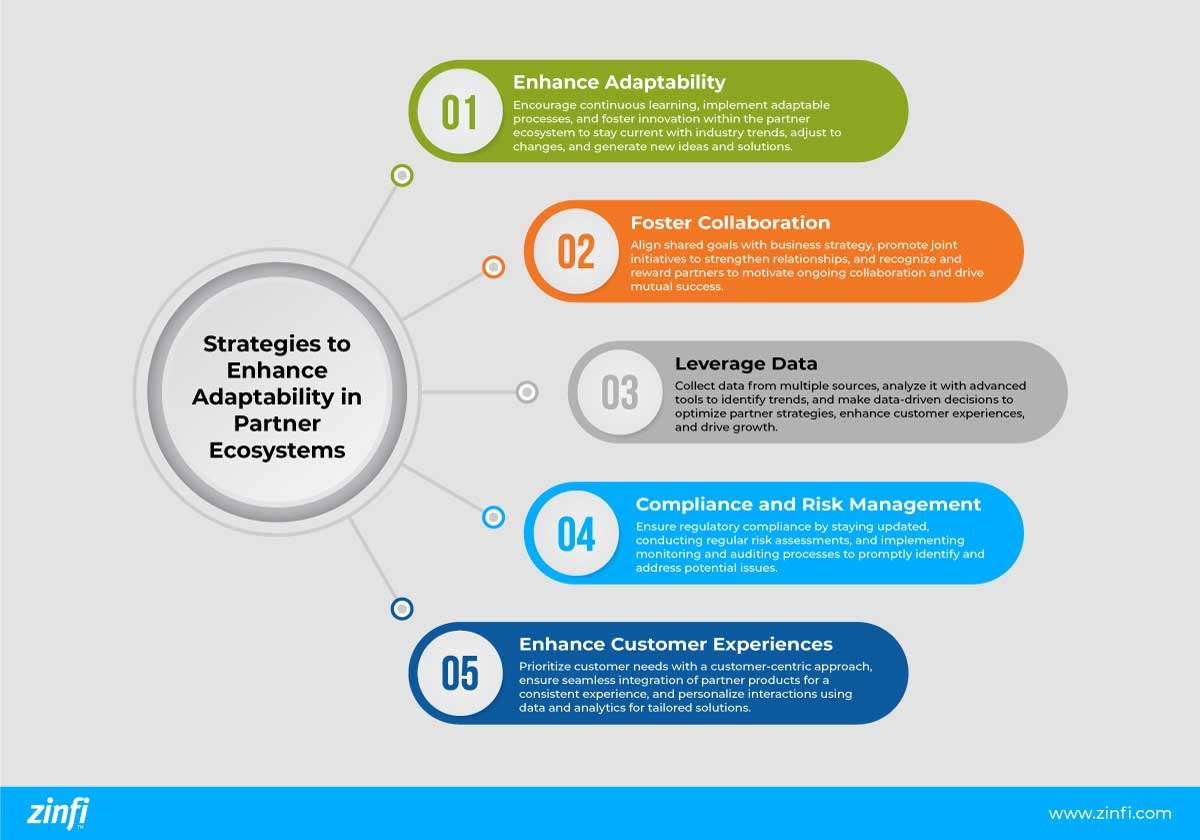
Expanding Market Reach through Partner Ecosystems
Partner ecosystems can help companies expand their market reach and enter new markets. By leveraging the strengths and capabilities of their partners, companies can access new customer segments and geographic regions.
Strategies for Market Expansion:
- Market Research: Conduct thorough market research to identify potential opportunities and target markets.
- Strategic Alliances: Form strategic alliances with local partners to navigate regulatory requirements and cultural differences.
- Localization: Adapt products and services to meet the needs and preferences of local customers.
The Role of Leadership in Partner Ecosystems
Effective leadership is crucial for the success of partner ecosystems. Leaders must provide clear vision, direction, and support to ensure the ecosystem aligns with the overall business strategy and achieves its objectives.
Key Leadership Qualities:
- Vision: Develop a clear vision for the partner ecosystem and communicate it effectively to all stakeholders.
- Strategic Thinking: Use strategic thinking to identify opportunities, address challenges, and make informed decisions.
- Empowerment: Empower partners with the resources, support, and autonomy they need to succeed.
The Impact of Digital Transformation on Partner Ecosystems
Digital transformation is reshaping partner ecosystems by enabling new ways of working, enhancing collaboration, and improving efficiency. Companies must embrace digital transformation to stay competitive and drive innovation within their ecosystems.
Critical Aspects of Digital Transformation:
- Automation: Use automation to streamline processes, reduce manual work, and improve accuracy.
- Cloud Computing: Leverage cloud computing to provide scalable and flexible solutions that can be accessed from anywhere.
- Digital Collaboration: Use digital tools to facilitate partner communication and collaboration.
Conclusion
Partner ecosystems are a cornerstone of modern business strategies. They enable companies to leverage collective strengths, drive innovation, and enhance customer satisfaction. As the business landscape evolves, the importance of effective partner ecosystem management will only grow. Leaders who can navigate the complexities of these ecosystems and adapt to changing market dynamics will be well-positioned for success.
Guest post by: Balaji Subramanian
Balaji Subramanian enjoys collaborating with Sales, Partners, Product, Finance, and Marketing to create GTM strategies and operational plans. His professional journey includes roles at companies like Cisco, Adobe, Informatica, ServiceMax, and IGEL, where he has honed his skills as a thought leader and results-oriented executive. Balaji has excelled in sales capacity planning, revenue planning, and analytics within sales operations leadership. Additionally, he has led channel and partner teams, managing a diverse ecosystem of partners, including resellers, distributors, and global system integrators. His combined experience in direct and indirect sales positions makes him a valuable and trusted advocate for both Sales and Partners.
Best Practices Guidebook
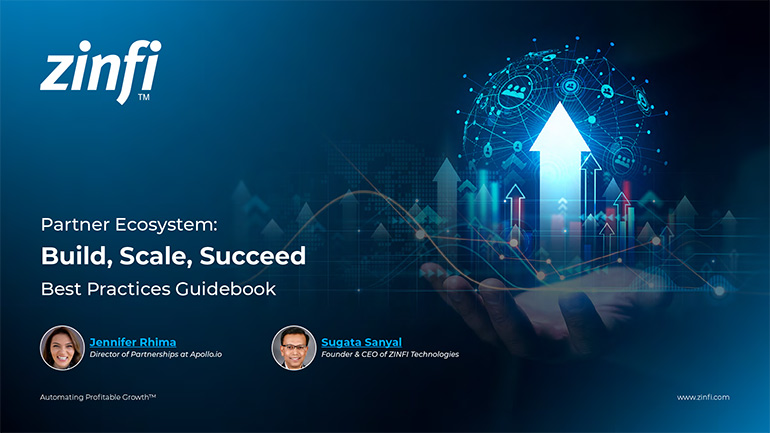 Partner Ecosystem Playbook: Build, Scale, Succeed Best Practices
Partner Ecosystem Playbook: Build, Scale, Succeed Best PracticesDownload for FREE
 Mastering LinkedIn: Building Personal Brands for Social Selling
Mastering LinkedIn: Building Personal Brands for Social SellingDownload for FREE
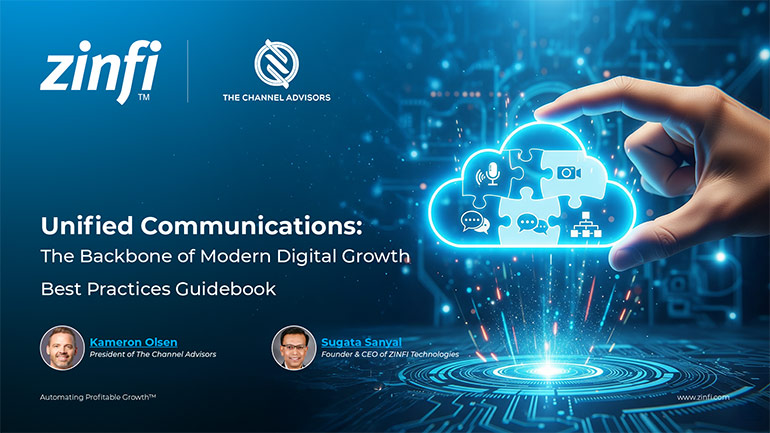 Unified Communications: The Backbone of Modern Digital Growth
Unified Communications: The Backbone of Modern Digital GrowthDownload for FREE
 The Channel Sales Playbook: Skills, Strategy, and Growth
The Channel Sales Playbook: Skills, Strategy, and GrowthDownload for FREE
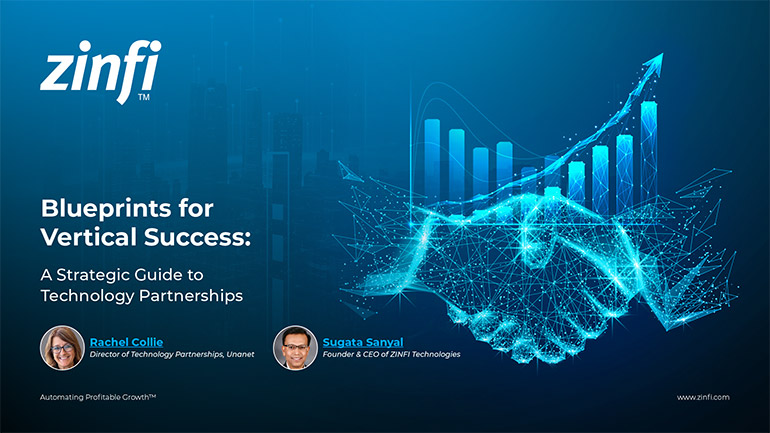 Blueprints for Vertical Success Best Practices
Blueprints for Vertical Success Best PracticesDownload for FREE
 The Future of Partner Enablement: From Enablement Gaps to Global Advantage
The Future of Partner Enablement: From Enablement Gaps to Global AdvantageDownload for FREE
 Reimagine Sales Development. Build a Smarter Prospecting Engine
Reimagine Sales Development. Build a Smarter Prospecting EngineDownload for FREE
 The Zero Trust Imperative: Fortifying Enterprise Security Against AI-Driven Threats
The Zero Trust Imperative: Fortifying Enterprise Security Against AI-Driven ThreatsDownload for FREE
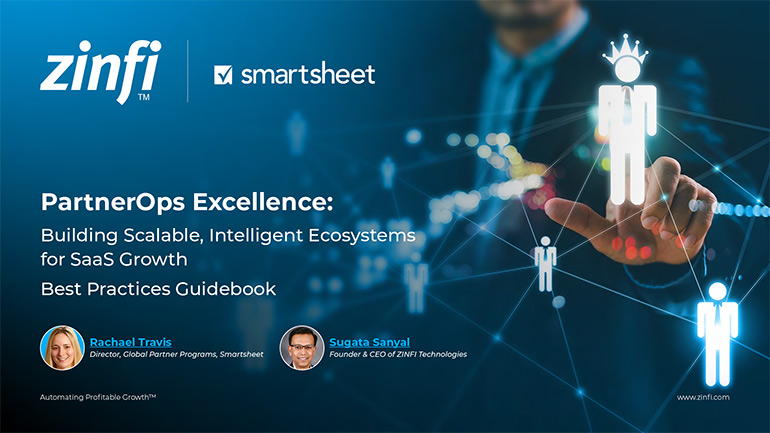 PartnerOps Excellence: The Definitive Guide to Scalable SaaS Ecosystems
PartnerOps Excellence: The Definitive Guide to Scalable SaaS EcosystemsDownload for FREE
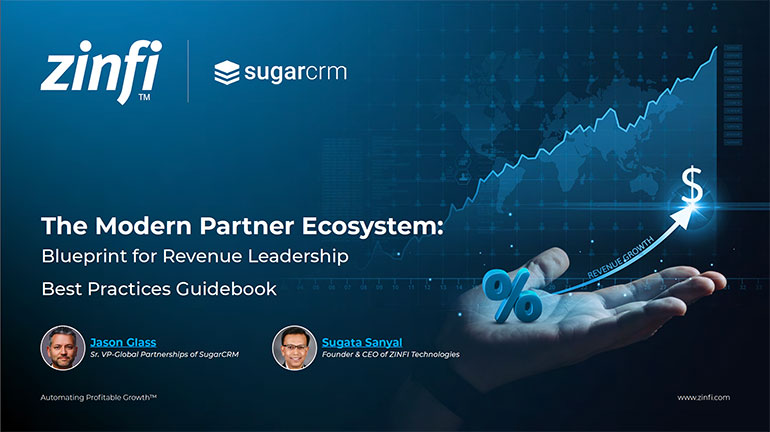 The Modern Partner Ecosystem Best Practices
The Modern Partner Ecosystem Best PracticesDownload for FREE
 Partner Marketing Reimagined: Strategies for Agile, Insight-Led Growth
Partner Marketing Reimagined: Strategies for Agile, Insight-Led GrowthDownload for FREE
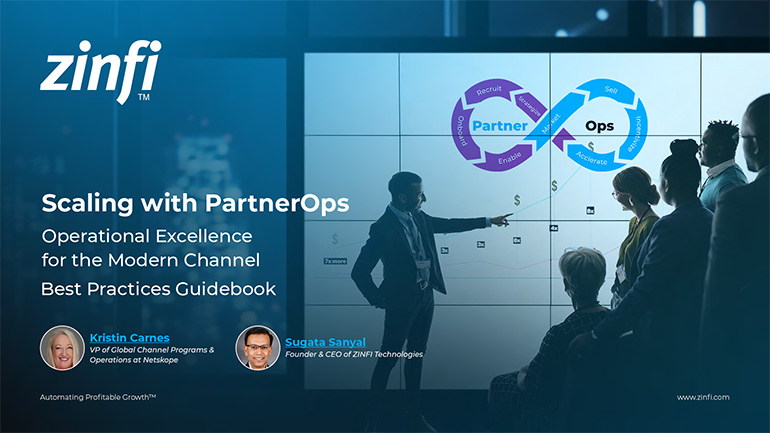 Scaling with PartnerOps Best Pratices
Scaling with PartnerOps Best PraticesDownload for FREE
 Leading with Partner Programs Best Pratices
Leading with Partner Programs Best PraticesDownload for FREE
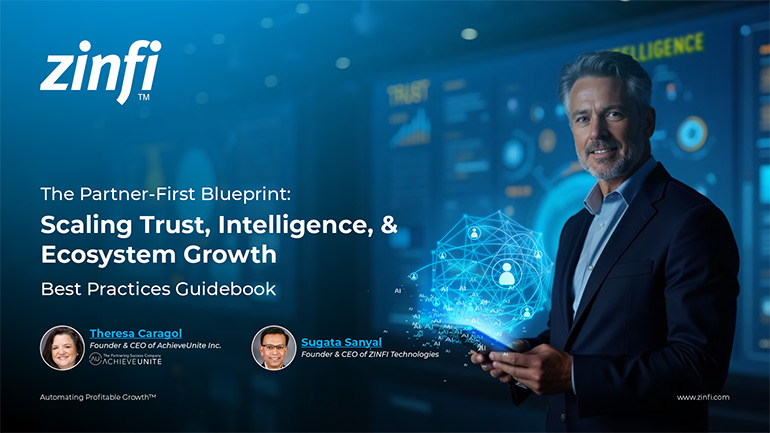 The Partner-First Blueprint: Scaling Trust, Intelligence, and Ecosystem Growth
The Partner-First Blueprint: Scaling Trust, Intelligence, and Ecosystem GrowthDownload for FREE
 Unlock Scalable Growth with The Partner Marketing Growth Blueprint
Unlock Scalable Growth with The Partner Marketing Growth BlueprintDownload for FREE
 From TikTok to LinkedIn: Social Selling Across the Generational Divide
From TikTok to LinkedIn: Social Selling Across the Generational DivideDownload for FREE
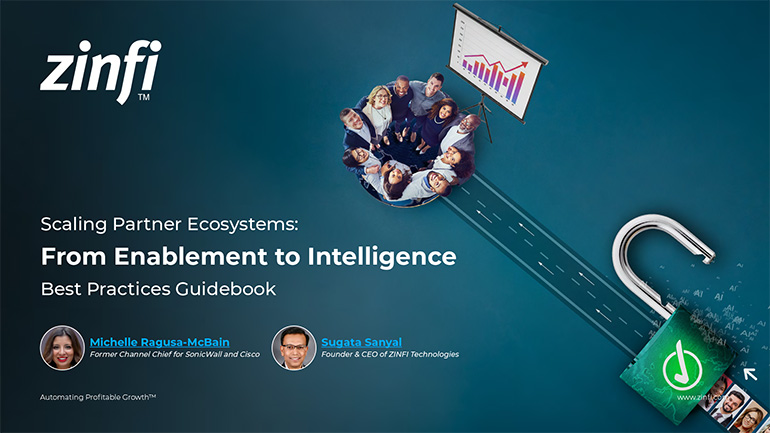 Scaling Partner Ecosystems: From Enablement to Intelligence
Scaling Partner Ecosystems: From Enablement to IntelligenceDownload for FREE








